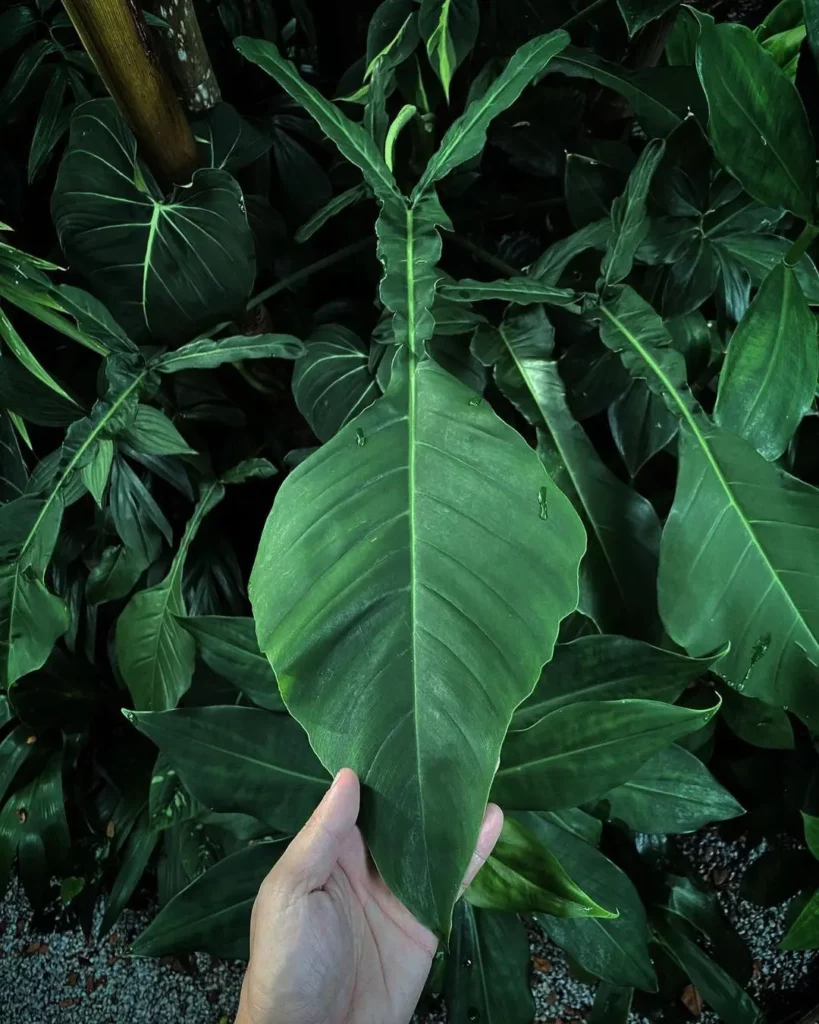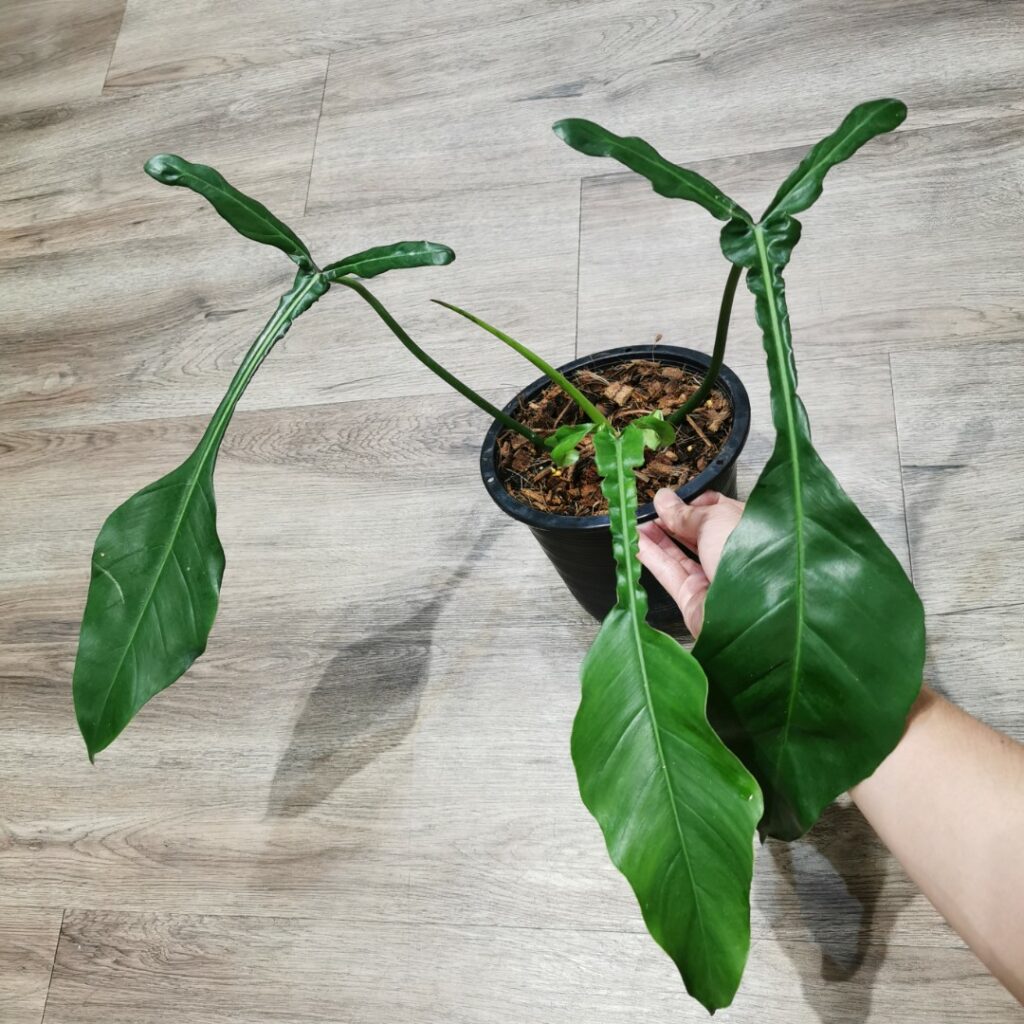Philodendron Joepii: A Comprehensive Guide to the Rare and Exotic Plant
Introduction
Philodendron Joepii is an exotic, rare, and highly sought-after tropical plant species from the large and diverse Philodendron genus. It's prized by collectors and plant enthusiasts alike for its unique, beautifully shaped leaves and intriguing natural history. In this article, we'll explore the taxonomy, origin, and habitat of the Philodendron Joepii, as well as its characteristics, growth, care requirements, and conservation status.

Taxonomy
The Philodendron Joepii belongs to the Araceae family and the Philodendron genus. This genus is made up of more than 450 species, many of which are highly prized for their ornamental value. The Philodendron Joepii was first described in 1991 by botanist Thomas B. Croat.
Origin and Habitat
-
Geography
The Philodendron Joepii is native to the tropical rainforests of South America, specifically the Serranía de la Macarena mountain range in Colombia. This region is known for its unique ecosystems and high levels of biodiversity.
-
Climate
The Philodendron Joepii thrives in a humid, tropical climate with consistently high temperatures and moisture levels. Its natural habitat experiences heavy rainfall throughout the year, creating the perfect environment for this moisture-loving plant.
Description
-
Leaves
The Philodendron Joepii has large, heart-shaped leaves that can grow up to 2 feet long and 1 foot wide. The leaves are dark green with a glossy surface and prominent veins. The leaf petioles have a characteristic reddish hue, which adds a touch of color to the overall appearance of the plant.
-
Inflorescence
Like other Philodendron species, the Joepii produces an inflorescence (a cluster of flowers) that is enclosed in a spathe. The spathe is a modified leaf that protects the flowers as they develop. The actual flowers are small and inconspicuous, but the spathes can be quite showy, ranging in color from green to red or maroon.
-
Roots
Philodendron Joepii has aerial roots, which it uses to anchor itself to trees and other structures in its native habitat. These roots not only provide support but also absorb moisture and nutrients from the surrounding environment.

"Unlock the beauty of nature in your home with the rare Philodendron Joepii! Click here to bring this exotic treasure to your space today."
Growth and Care
-
Soil
Philodendron Joepii prefers a well-draining, loose, and aerated soil mix. A highquality, peat-based potting mix with added perlite, orchid bark, or coco coir will provide the necessary drainage and aeration that this plant requires. Be sure to avoid heavy or compacted soils, as they can lead to root rot and other issues.
-
Light
The Philodendron Joepii thrives in bright, indirect light. Direct sunlight should be avoided, as it can cause the leaves to scorch or become discolored. In its natural habitat, this plant grows beneath the forest canopy, which filters the sunlight and provides the perfect lighting conditions. If you're growing your Joepii indoors, place it near a window with filtered light or use a sheer curtain to protect it from harsh sun rays.
-
Water
The Philodendron Joepii requires consistent moisture to grow and remain healthy. However, overwatering can lead to root rot and other issues. Allow the top inch or two of soil to dry out before watering again, and be sure to use a well-draining pot with drainage holes to prevent water from sitting at the bottom of the pot.
-
Propagation
Propagation of Philodendron Joepii can be done through stem cuttings, which should be taken from healthy, mature plants. Ensure that each cutting has at least one node and a few leaves. After taking the cutting, allow it to callous for a day or two, then place it in a container with moist, well-draining soil. Keep the soil consistently moist and provide the cutting with bright, indirect light until new roots have formed.
See more list of the most popular houseplants
See more latest list of rare tissue culture plants
Conservation Status
The Philodendron Joepii is considered a rare species in the wild due to habitat loss and over-collection for the ornamental plant trade. Conservation efforts are being made to protect this unique plant and preserve its natural habitat. It's essential for plant collectors and enthusiasts to acquire their specimens from reputable sources that propagate plants responsibly, rather than taking them from the wild.
Conclusion
The Philodendron Joepii is a stunning and rare plant that can make a beautiful addition to any plant collection. By understanding its native habitat, growth requirements, and care needs, you can help ensure the long-term health and survival of this fascinating species. Additionally, supporting responsible propagation and conservation efforts will contribute to the preservation of this plant for future generations to enjoy.

FAQs
1. How often should I water my Philodendron Joepii?
Water your Philodendron Joepii when the top inch or two of soil feels dry to the touch. Be sure not to overwater, as this can lead to root rot and other issues.
2. Can Philodendron Joepii grow in low-light conditions?
Philodendron Joepii prefers bright, indirect light and may not thrive in low-light conditions. If you're growing your Joepii indoors, place it near a window with filtered light or use a sheer curtain to protect it from harsh sun rays.
3. Is Philodendron Joepii toxic to pets?
Yes, Philodendron Joepii contains calcium oxalate crystals, which can cause irritation and swelling if ingested by pets or humans. Keep this plant out of reach of children and pets to avoid accidental ingestion.
4. How do I propagate Philodendron Joepii?
To propagate Philodendron Joepii, take stem cuttings from a healthy, mature plant. Allow the cutting to callous for a day or two, then place it in a container with moist, well-draining soil. Keep the soil consistently moist and provide the cutting with bright, indirect light until new roots have formed.
5. Why are the leaves on my Philodendron Joepii turning yellow?
There could be several reasons why the leaves on your Philodendron Joepii are turning yellow. The most common causes are overwatering, underwatering, inadequate light, or a nutrient deficiency. Make sure your plant is receiving the proper care in terms of watering, light, and nutrients to maintain its health and prevent yellowing leaves.
https://greenboog.com/philodendron-joepii-a-comprehensive-guide-to-the-rare-and-exotic-plant/
Nhận xét
Đăng nhận xét